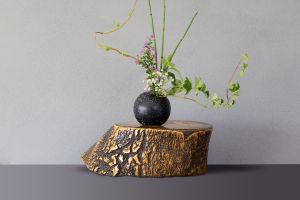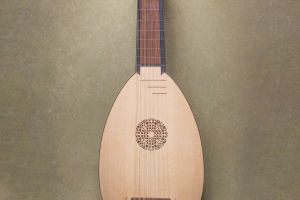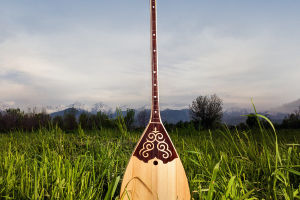Choosing your first violin can be an exciting yet daunting task.
With various brands, sizes, and price ranges available, it’s essential to select an instrument that suits your needs and helps foster your musical journey.
Here’s a comprehensive guide to help you choose the right entry violin.
1. Determine Your Budget
Before diving into the specifics, it's crucial to establish a budget. Entry-level violins can range from $100 to $500. While it's tempting to opt for the cheapest option, investing in a slightly more expensive violin can make a significant difference in sound quality and playability. Remember, a higher-quality instrument can be more enjoyable to play and might keep you motivated to practice.
2. Choose the Right Size
Violins come in various sizes to accommodate players of different ages and arm lengths. The most common sizes are:
- 4/4 (Full Size): Suitable for adults and children over 11 years old.
- 3/4: Ideal for children aged 9-11.
- 1/2: Best for children aged 6-10.
- 1/4: Designed for children aged 5-7.
- 1/8, 1/10, 1/16, 1/32: For younger children, typically aged 4-5 and below.
To find the right size, have the player extend their arm and measure from the neck to the middle of the palm. This measurement can help you determine the appropriate violin size.
3. Material Matters
The quality of materials used in making a violin affects its sound and durability. Look for violins made from solid wood, as opposed to plywood. The top (or belly) should be made from spruce, while the back and sides should be crafted from maple. The fingerboard, pegs, and chinrest are traditionally made from ebony, which is durable and smooth.
4. Understanding Violin Components
- Body: The body of the violin should be made of solid wood for better resonance. Inspect the craftsmanship; the seams should be tight and the finish smooth.
- Fingerboard: An ebony fingerboard is preferred for its hardness and durability. Avoid painted fingerboards, as they wear out quickly.
- Pegs: Pegs made from ebony or rosewood are more reliable. Ensure they turn smoothly without slipping.
- Bridge: The bridge should be correctly shaped and positioned. A poorly fitted bridge can affect the sound and playability.
- Strings: Entry-level violins often come with basic strings. Upgrading to better quality strings can significantly improve sound quality.
5. Acoustic vs. Electric
For beginners, an acoustic violin is typically recommended. It allows you to learn proper techniques and appreciate the natural sound of the instrument. However, if you live in a place where noise could be an issue, an electric violin with headphones might be a good alternative.
6. Check the Setup
A properly set up violin is crucial for ease of play and sound quality. Ensure the bridge is correctly positioned, the sound post is properly placed, and the strings are at the right height. Many music stores offer setup services, so it’s worth purchasing from a store that provides this.
7. Rent or Buy?
If you’re unsure about committing to a violin purchase, consider renting one. Many music stores offer rental programs that allow you to use a violin for a monthly fee. This can be a cost-effective way to start, especially for young children who may outgrow their instruments.
8. Try Before You Buy
Whenever possible, try out different violins before making a decision. Visit a music store and play several instruments to compare their sound and feel. Bring along an experienced violinist or teacher to help you evaluate the options.
9. Accessories
When purchasing a violin, you’ll also need some essential accessories:
- Bow: Ensure the bow is well-balanced and made of quality materials. Beginner bows are typically made of brazilwood or carbon fiber.
- Case: A sturdy case protects your violin during transport. Look for a case with good padding and compartments for accessories.
- Rosin: This substance is applied to the bow hair to help it grip the strings.
- Shoulder Rest: A shoulder rest provides comfort and support, helping to maintain proper posture.
10. Seek Expert Advice
Don’t hesitate to ask for advice from music teachers, violinists, or knowledgeable staff at music stores. They can offer valuable insights and recommendations based on their experience.
Choosing an entry violin is a significant step in your musical journey. By considering factors such as budget, size, material, and setup, you can find an instrument that suits your needs and encourages you to practice and improve. Remember, the right violin can make a world of difference in your playing experience, so take your time and choose wisely. Happy playing!


